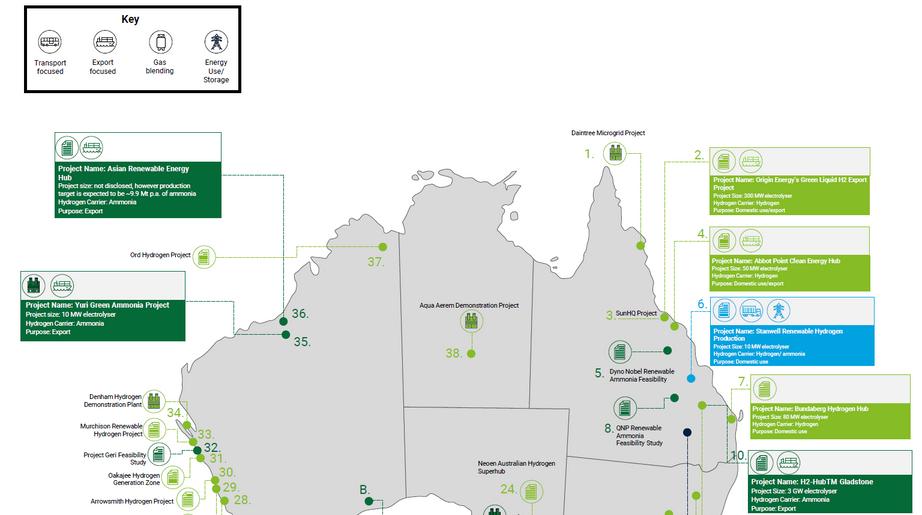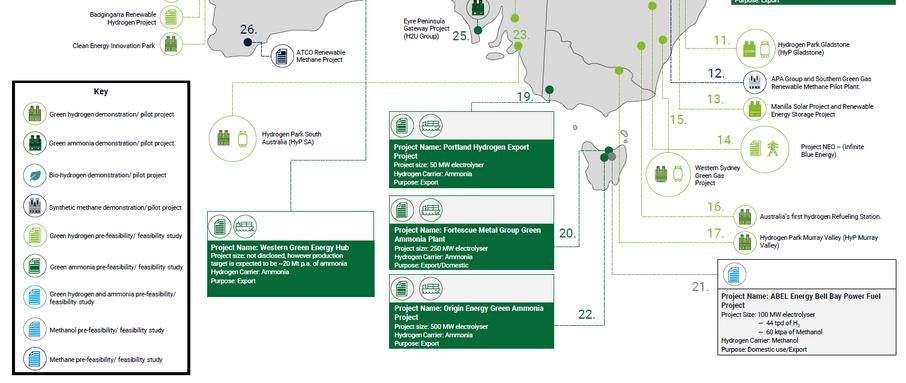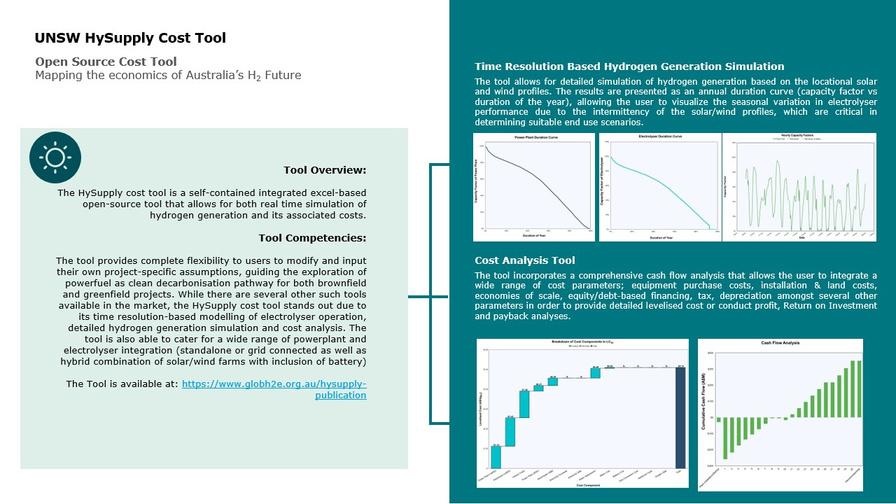
1 minute read
HySupply Australia State of Play
The State of Play (SoP) document built the case for Australia’s opportunity to be a key clean energy export superpower to Asia-Pacific and EU, presenting the country’s credentials for conventional energy exports, ability to ramp-up projects, infrastructure capability, worldleading renewable potential as well as political alignment to develop a renewable export supply chain. The Australian Hydrogen Competitiveness Matrix clearly highlights the country has the foundation to build a strong hydrogen value chain with strong Federal and State and Territory Government support and this is reflected by takeoff of large-scale hydrogen projects in the country (Figure 3)


The SoP also identified export pathways under consideration by Australian project developers including liquid hydrogen, ammonia, methanol and LOHCs (all considered by Meta-Analysis) but extended to also include synthetic methane. Given the recent energy crisis in EU and Germany arising from political developments in Eastern Europe, demand for LNG has skyrocketed, which provides a clear and early market for synthetic methane/LNG as off-take opportunity in Germany
The SoP also provided preliminary technology assessment, cost estimates for the export pathways, which also included shipping costs as well as developing a multi-criteria analysis (MCA) tool for assessing hydrogen derivatives against key techno-economic criteria, such as commercial, hydrogen export, energy export, transportation and decarbonisation benefits

A key insight arising from this assessment is that while Australia and Germany shipping routes are quite long, shipping costs are not a deal-breaker to the trade and rather the cost of renewable electricity amongst othe factors will continue to play a governing role in dictating feasibility The report shows that already today, Australia’s best locations can produce renewable hydrogen at 2-6 €/kg Preliminary modelling also indicates that renewable ammonia offers the most economical pathway with delivered hydrogen cost between 3 5-8 8 €/kg at the Port of Rotterdam
HySupply Australia Open-Source tools
To allow for flexibility with the changing cost drivers, HySupply Australia has developed a series of open-source tools including renewable hydrogen costing tool, renewable ammonia cost tool, renewable methanol cost tool and an export transportation model tools These open-source tools are released as an asset of the HySupply project with the intent to iteratively improve existing functionalities and data sets to provide holistic, high-level, prefeasibility assessments for possible hydrogen projects, as we build towards a complete value chain assessment tool





